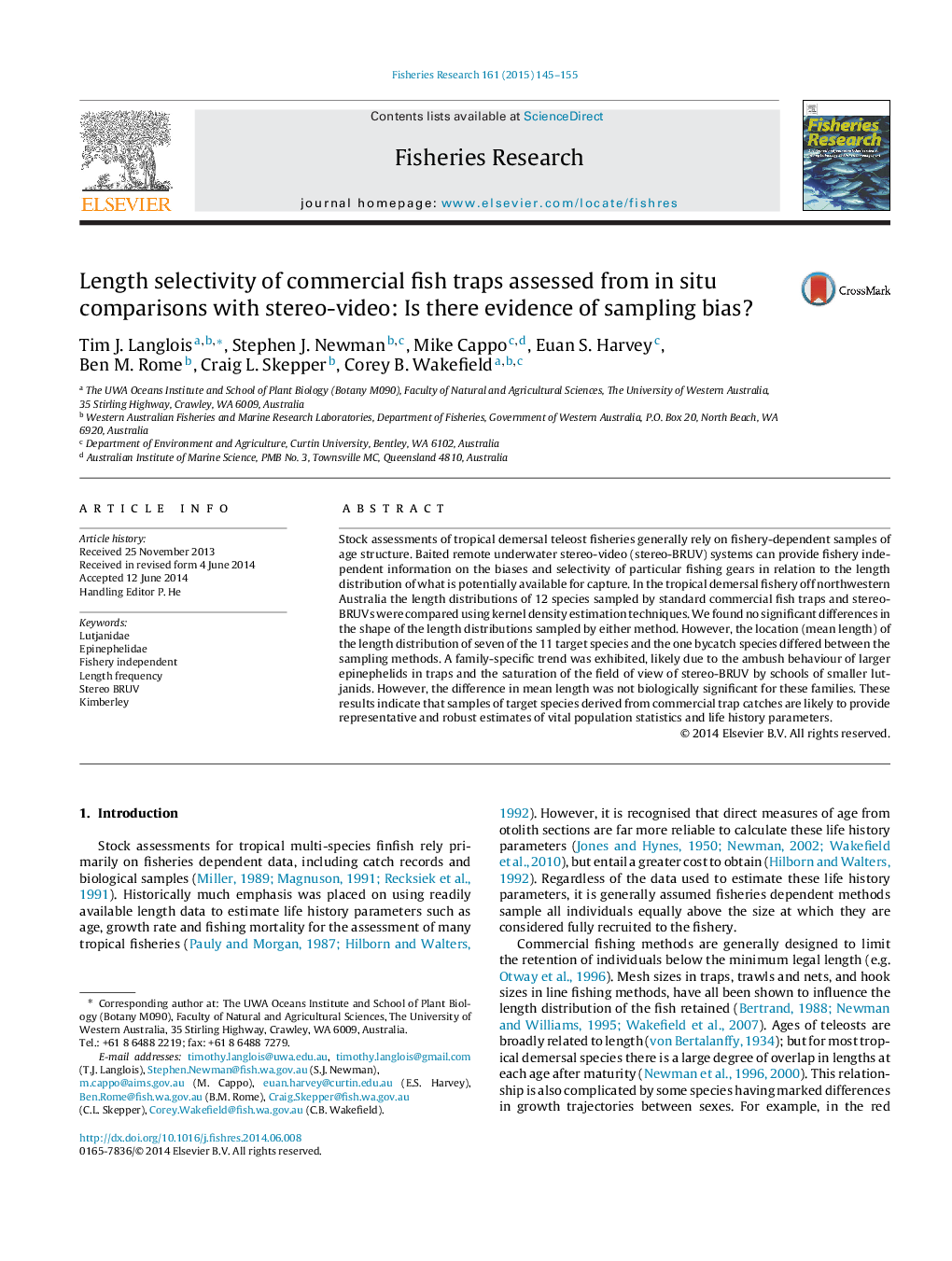| Article ID | Journal | Published Year | Pages | File Type |
|---|---|---|---|---|
| 6385789 | Fisheries Research | 2015 | 11 Pages |
Abstract
Stock assessments of tropical demersal teleost fisheries generally rely on fishery-dependent samples of age structure. Baited remote underwater stereo-video (stereo-BRUV) systems can provide fishery independent information on the biases and selectivity of particular fishing gears in relation to the length distribution of what is potentially available for capture. In the tropical demersal fishery off northwestern Australia the length distributions of 12 species sampled by standard commercial fish traps and stereo-BRUVs were compared using kernel density estimation techniques. We found no significant differences in the shape of the length distributions sampled by either method. However, the location (mean length) of the length distribution of seven of the 11 target species and the one bycatch species differed between the sampling methods. A family-specific trend was exhibited, likely due to the ambush behaviour of larger epinephelids in traps and the saturation of the field of view of stereo-BRUV by schools of smaller lutjanids. However, the difference in mean length was not biologically significant for these families. These results indicate that samples of target species derived from commercial trap catches are likely to provide representative and robust estimates of vital population statistics and life history parameters.
Related Topics
Life Sciences
Agricultural and Biological Sciences
Aquatic Science
Authors
Tim J. Langlois, Stephen J. Newman, Mike Cappo, Euan S. Harvey, Ben M. Rome, Craig L. Skepper, Corey B. Wakefield,
